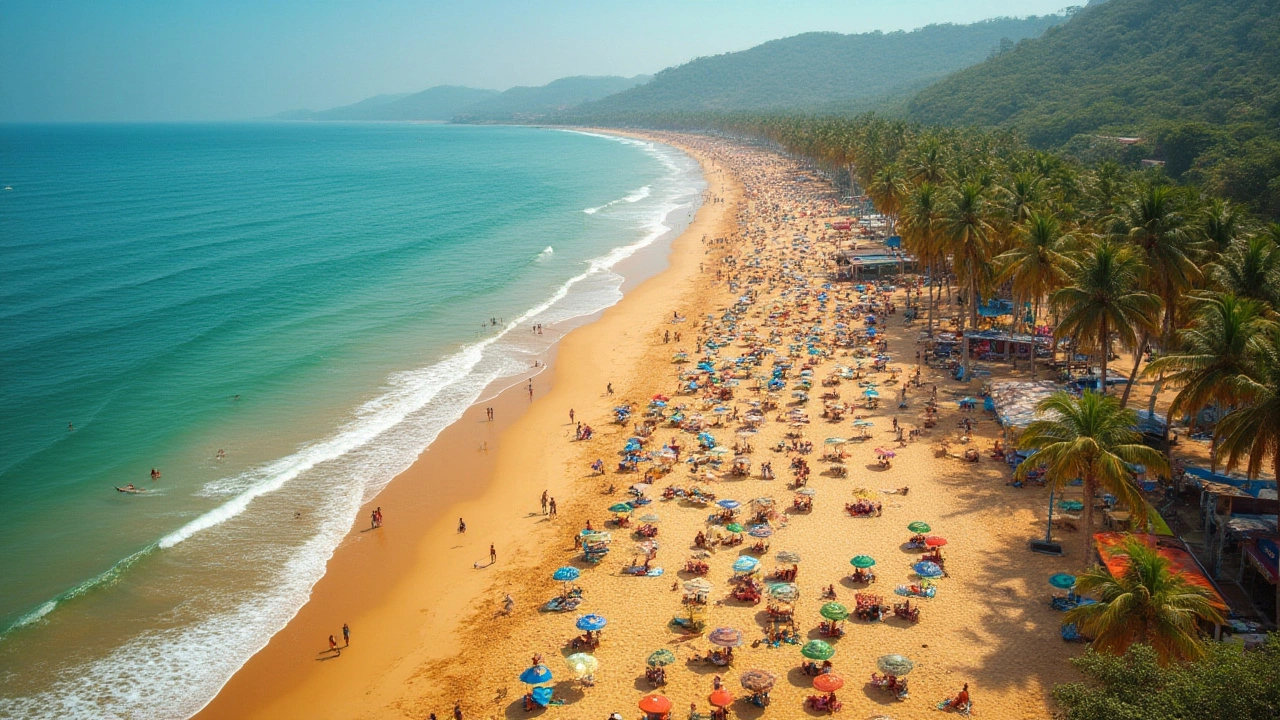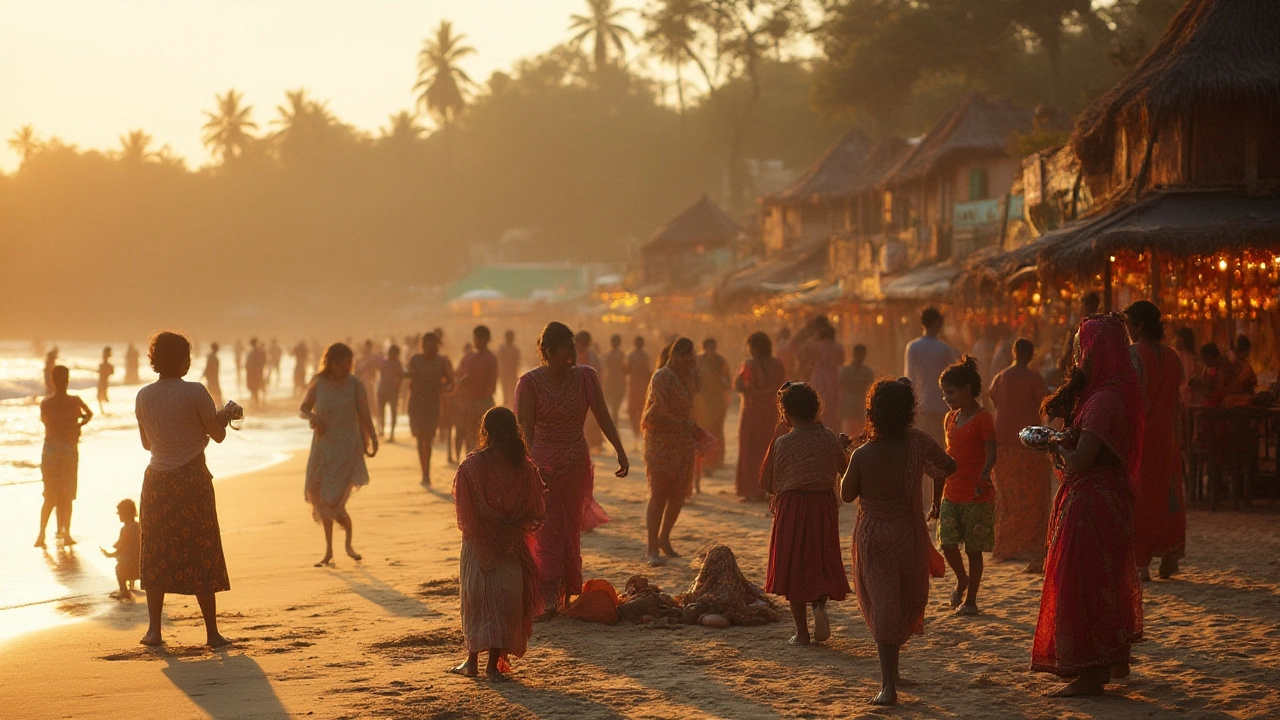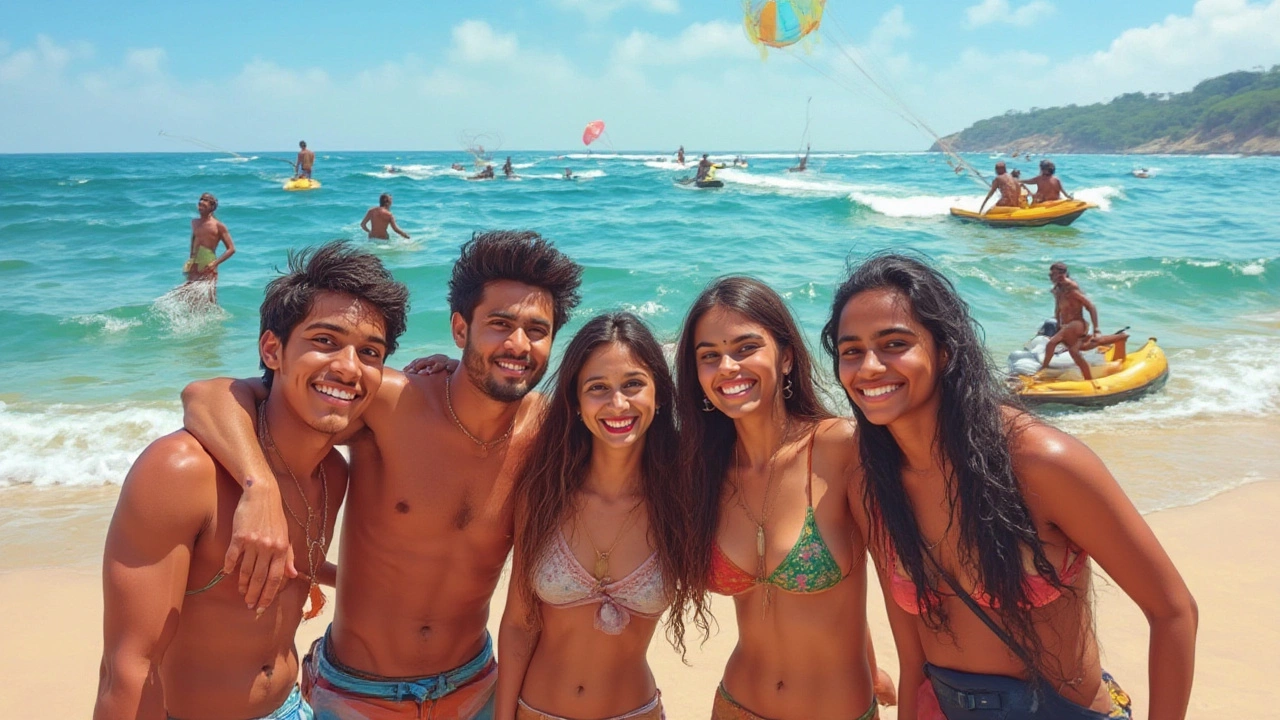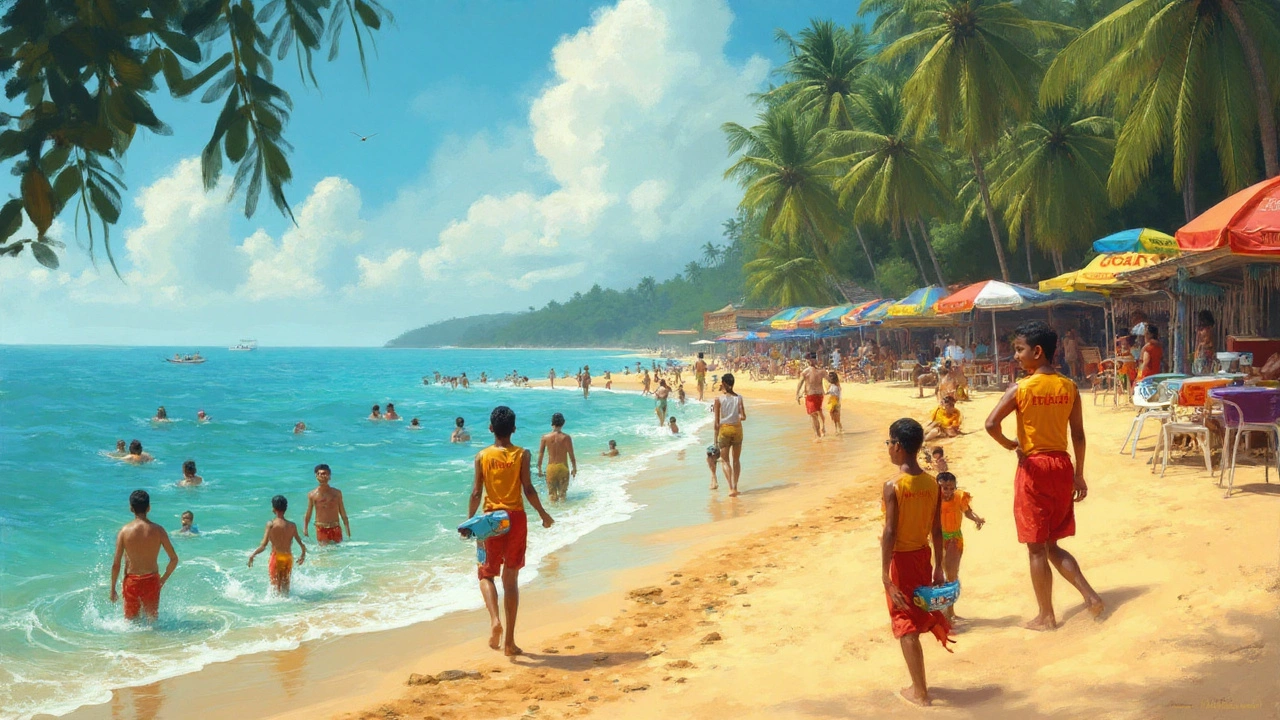Goa's Calangute Beach: Queen of Beaches in India Revealed

Ever strolled along a beach so alive that every single footstep feels like it's part of a bigger, wilder story? Imagine golden sands, wild waves, and an energy that lives and breathes around the clock. In India, there's one beach everyone secretly (and not-so-secretly) calls the queen. We're talking about Calangute Beach in Goa. No contest. Locals brag about it, travel junkies rave about it, and if beaches could have Instagram followers, Calangute would be the ultimate influencer. But why does this particular stretch hog the crown, especially with so much coastline fighting for attention?
Why Calangute Beach Holds the Crown
Calangute Beach stands out for more than just its size. It's the vibe, the people, and the stories the wind carries down the shore. Unlike isolated coves with nothing but your own shadow for company, Calangute pops with a mix of crowds, color, and music. It stretches nearly four kilometers—wide, open, and never feeling cramped, even on peak days. When you arrive, there’s no confusion. Bright shacks line the sands, selling everything from spicy prawn curries to chilled coconut water, and there are always kids building castles while jetskis roar in the distance.
Historically, Calangute hasn’t always been the party hub it is now. Back in the 1960s, it was just a sleepy fishing village. Then came the hippies—blazing a trail of bohemian art and St. Christopher’s medallions. Word spread, and suddenly, artists, musicians, and backpackers from every corner of the globe flocked here. The once-quiet sands took on a new lease of life. Today, that sense of freedom stays strong. You might see a British backpacker strumming his guitar, or a local fisherman hauling in his daily catch, all under the same sunset.
And it’s not just about the crowds. You’ve got stunning palm trees waving overhead, water sports almost any month of the year, and sand that feels impossibly soft underfoot. Feel like shopping? Calangute’s main road has street vendors selling handmade jewelry, sarongs, and those famous shell trinkets you’ll probably take home but never use. After a swim, join locals and tourists alike at shacks like Souza Lobo, famous for its Goan seafood. The beach transforms at sunset—think bonfires, live music, and hands clutching cool drinks. You don't need an invitation. Calangute is built on the spirit of serendipity.
How popular is it? Just look at the numbers. According to the Goa Tourism Development Corporation, Calangute receives over 800,000 visitors annually, making it the single most visited beach in the state. Check out this comparison table of notable Indian beaches:
| Beach | State | Avg. Yearly Visitors | Famous for |
|---|---|---|---|
| Calangute | Goa | 800,000+ | Energy, water sports, shacks |
| Baga | Goa | 600,000 | Nightlife, clubs |
| Marina | Tamil Nadu | 450,000 | Longest stretch, local food |
| Varkala | Kerala | 300,000 | Cliffs, calm, wellness |
Even outside the busy seasons, Calangute keeps buzzing. Monsoon time brings dramatic waves and lush greenery, while the winter sun means cool, perfect evenings. The nickname ‘Queen of Beaches’ isn’t just travel brochure hype—it’s how people really feel after their first feet-in-the-sand moment here.

What Makes Calangute Unique Among Indian Beaches?
If you’re picturing another generic stretch of sand, think again. Calangute thrives on contrasts. Sure, you’ll see all the classic beach stuff—people tanning, volleyball games, noisy seagulls. But the backdrop is pure Goa: colonial-era buildings peek out behind rows of palm trees, and you’ll sometimes stumble upon a centuries-old church or a crumbling monument in the backstreets. Try that at some faceless resort beach.
There’s also an intensity in how the day moves. Morning starts easy—the occasional jogger, fishermen prepping nets, the aroma of chai drifting out of a shack. By lunchtime, the surfboarders and parasailers show up, followed by friends haggling at market stalls or lining up for ice cream. Afternoons roll into bustling evenings; this is the only time you’ll hear more than five languages in one go. The nightlife deserves its own mention. Not only are there thumping beach parties right on the sand, but small gigs and acoustic jam sessions are almost nightly.
If you're worried about safety, Calangute's got your back. It’s watched over by lifeguards, and there’s a steady police presence. You’ll see lifeboat patrols zipping across the shoreline, especially during crowded weekends or festival seasons. Even late into the night, food shacks keep their lights twinkling, giving the beach a feeling of constant, gentle buzz rather than chaos.
The people-watching here is wild. On a single afternoon, you could spot a family of seven digging moats around a sandcastle, a digital nomad working from their laptop at a cafe, and a henna artist pulling in customers with crazy, intricate designs. Unlike some beaches, where locals and outsiders barely mix, at Calangute it's all mashed together. Join a cricket match, chat up a vendor, or just wander; you’ll end up tangled in a dozen weird, memorable moments.
Calangute is also surprisingly accessible for everyone, not just high-rolling tourists. Yes, you'll find plush resorts, but there are plenty of laid-back guesthouses, cheap homestays, or hostels for backpackers too. And the food? It’s a treasure. Order a spicy vindaloo or fresh grilled kingfish—real Goan food is as much a draw as the beach itself. In fact, legend has it that Anthony Bourdain once declared Goa's beach shacks “some of the most honest kitchens in the world.” Locals swear by Zeebop’s fiery fish curry and Tio Tilly’s tangy prawn masala.
It’s not just about what you can buy, however. The beach hosts several festivals—from huge New Year’s parties to quieter local celebrations like Sao Joao, where the action spills right into the surf. Ever seen dozens of locals jump into the waves wearing flower crowns? Only at Calangute.
Now, if you plan to visit, pay attention to the tides. Monsoon months (June to September) mean rougher seas; good for dramatic photos, not ideal for swimming. Peak months (November to February) bring perfect weather, comfortable waters, and an endless line of sun loungers. If you’re chasing that “empty beach at sunrise” moment, get there early. The sand is cool, the crowds lighter, and the light—simply unreal.

Tips for Visiting and Getting the Most Out of Queen Calangute
Heading to Calangute isn’t quite like dropping by your nearest local park. The place is famous for drawing everyone from backpackers to Bollywood stars, so turning up unprepared can mean missing out. Before you go, here are a few tips Simba (my very sneaky cat, and a notorious beach lover, by the way) would want me to share.
- Best Time to Visit: The most comfortable months are November to February. The weather is mild, there’s hardly any rain, and the parties gear up. Monsoon season may be wild, but swimming becomes dangerous. Lifeguards raise red flags when the current’s too strong—always obey them, especially if you’ve brought kids.
- Accommodations go from budget to lavish. For hostels, book early in December or January. If you want a mid-range stay, try the boutique guesthouses a couple of lanes away from the sand—that’s where the best late-night chai stalls pop up.
- Packing matters. Bring sunscreen (the Goan sun can roast you in minutes), flip-flops, and a backup charger. The humidity can eat battery life alive.
- Explore the nearby markets. Calangute’s Friday Bazaar has everything from wood crafts to hippie clothes. Bargain vendors give surprisingly good deals—if you smile and haggle a bit, it’s part of the game.
- Transportation is crazy easy. Rent a scooter and glide from Calangute to Baga or Anjuna. Roadside rental kiosks will ask for your license and a small deposit, but they’re usually safe. Taxis are plentiful, but there’s nothing like a wind-in-your-face ride down the palm-lined lanes.
Food and hygiene can trip up over-eager travelers. Stick with shacks that show off their fresh seafood on ice, and don’t drink tap water—grabbing a sealed bottle is your safest bet. Most shacks accept digital payments these days, so you don't have to carry a wallet stuffed with rupees.
Ready-made memories wait for you if you look beyond the usual. Try kayaking at sunrise or join a sunset yoga session in the sand—there are hidden classes if you poke around Instagram or ask a local. If you’re into art, the clutch of local galleries on Calangute’s main lane displays pieces you won’t find in tourist shops.
Keep an eye out for wildlife, too. Besides the regular beach dogs (super friendly), you’ll sometimes spot kingfishers and egrets darting between the palm branches. Early mornings can be surprisingly peaceful, with just the sound of waves and a few determined joggers.
Night time is where Calangute says, “Why sleep?” Besides the classic bars and EDM-fueled bashes, there are quiet beach bonfires and random drum circles close to the lighthouse. It’s the sort of night where you might make a friend for life or lose hours just staring at the giant Goan moon.
And that’s the secret. Maybe that’s why Calangute will always be called the queen of beaches in India. It’s bold. It mixes old-school charm with new-world energy, and somehow—despite the noise, the crowds, and the chaos—it always saves a little space for you, your towel, and everything you’re hoping to find in a day by the sea.
